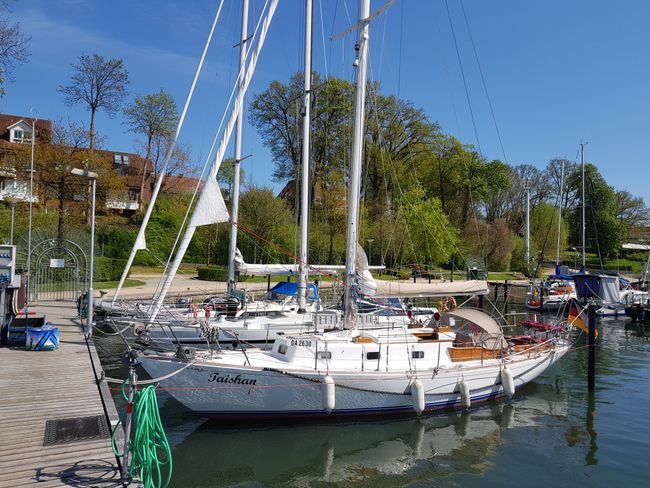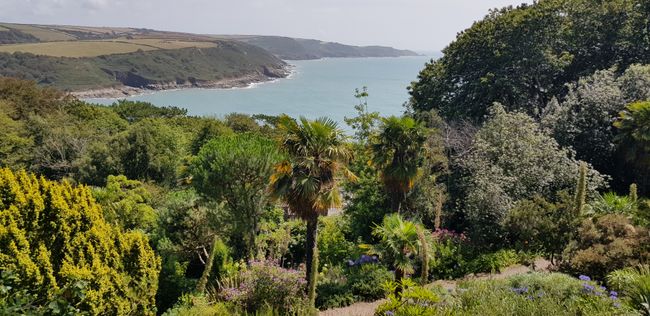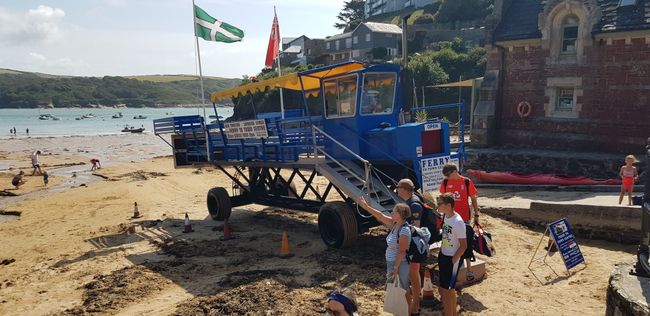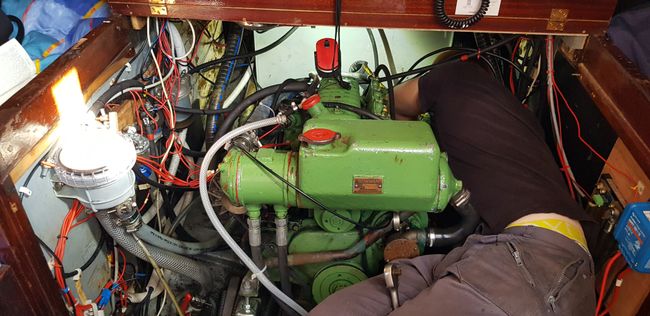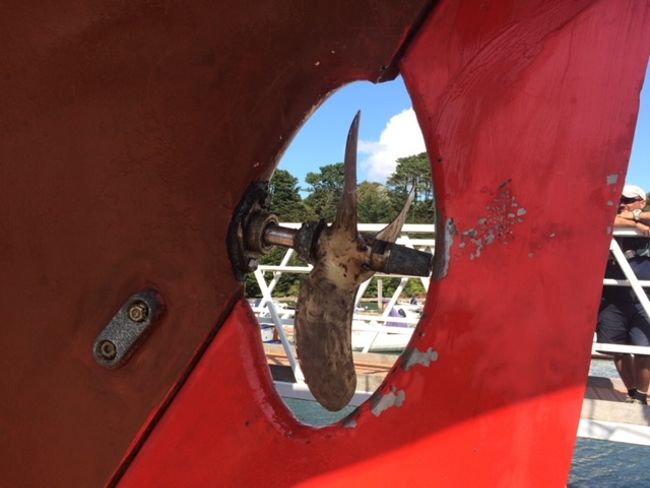Salcombe and Plymouth
ထုတ်ဝေခဲ့သည်။: 16.08.2019
သတင်းလွှာကို စာရင်းသွင်းပါ။
The current slowly pushed us towards leeward - a cliff with rocks in front. The downwind breeze barely filled the genoa. I decided to engage again. With idle speed and a terrible noise in the shaft, we even made some headway. Slowly, we were able to free ourselves from the dangerous leeward situation. So we chugged slowly towards Salcombe, about 4.5 nautical miles away. Then some wind picked up. Our guardian angel had not left us. We called Salcombe Harbour on channel 80 and described our plight. They promised to provide us with towing assistance once we were over the bar at the entrance to the bay - the Coast Guard is responsible outside on the high seas. In the meantime, we were making almost 3 knots and slowly felt our way through the buoyed entrance. A short time later, a launch with two men from the Harbour Patrol came, offering us towing assistance and bringing us to a mooring buoy. When we came to a stop at the mooring buoy, there was a loud crash and then - nothing. No propeller effect anymore - the propeller, or rather the propeller shaft, must have lost its connection to the gearbox flex coupling. Marcus, one of the men from the launch, immediately recognized the mishap. Up until now, I had assumed that a fishing net, or removing it, could free us from our predicament, so now these illusions vanished. It had to be a bigger problem. I asked Marcus if the SY could be lifted out of the water. Yes, he said, there was a way to lift the SY. In the harbor, there was a self-propelled lifter with two straps, capable of lifting up to 10 tons. I was relieved to learn that the Taishan had never exceeded 10 tons. However, due to the worsening weather with gusts of up to 8 Beaufort, we can only come out of the water on Monday at high tide at 1 p.m. I agreed to the proposal, as I feared the worst. So we stayed at the mooring over the weekend and took a water taxi to Salcombe, visited Otto Overbeck's house, and passed the time. The bay of Salcombe and the town itself are truly magnificent.
On Monday, it was time. Marcus arrived on time with a slightly sturdier man, who turned out to be the owner of the 'lift assistance'. The Taishan was tied alongside the launch and taken upstream along the mooring field. Barely past the harbor office, the rudder jammed. Steering the Taishan was now impossible. But the crane was in sight.
The time window of 3 hours was somewhat short, as the Taishan would tip over when the water receded. But then the 'lifter' - a self-propelled crane with 4 hydraulic jacks and 2 straps - was positioned under the Taishan.
The tension was rising. I feared a propeller damage and a rudder damage. The Taishan was slowly lifted and the underwater hull emerged. The propeller was wrapped in a fishing net. However, the shaft had moved aft and blocked the rudder! In the Lankieler, the propeller is guided in a propeller tunnel, which, the prevailing opinion holds, protects the propeller from fishing nets and floating lines. Far from it. The fishing net could be removed relatively easily. Thank God neither the propeller nor the rudder was damaged. The shifted shaft only blocked the rudder. What luck that the shaft only shifted aft during towing. It is unimaginable what would have happened if this had occurred leeward! A nice Englishman gave us the advice to call Jamie, a well-known mechanic in Salcombe. He could take a look at the problem, and usually, Jamie can fix everything at an acceptable price. After my experience with the WEST Marina in Brighton, I was somewhat skeptical. But Jamie, whom we called immediately, promised to be there in 30 minutes. And indeed, after 30 minutes, a white van with two men drove onto the premises. A man in his mid-40s, Jamie, and a young man, Gordon (his apprentice), got out of the van and approached us. Without many words, we climbed aboard the Taishan using a ladder. Jamie examined the damage and immediately got to work. We were incredibly lucky to get such a competent mechanic. After a short consultation with the shipyard manager, the Taishan could remain in the straps, as there were no stands available anyway. Furthermore, the ebb tide was already in full flow.
In the meantime, Jamie and Gordon were busy removing the heat exchanger and other parts from the engine to reach the gearbox. So it can also be done - without removing the engine, as was the case with WEST Marine. The damage diagnosis was: nothing is broken, but the clamps that had installed the propeller shaft and the new flex coupling at WEST Marine had not properly tightened the screws to secure the propeller shaft. Thus, the shaft had loosened and slid aft. With a short keeler, this shaft and the propeller would have come out completely and sunk to the bottom of the seabed.
Jamie and Gordon worked until 8 p.m. In the end, the shaft was pushed back forward, and the screws were tightened. It's incredible how smoothly the work went. I expected a price of about 500 pounds and - paid half, with a decent tip added. We then spent the night in the 'suspended' Taishan, which is actually prohibited - but there were no more free rooms in Salcombe. The next day, the Taishan was scheduled to be launched at 3:30 p.m. (due to high tide). Jamie wanted to do a final check of his work and promised to come at the same time.
The next day came. When the Taishan was supposed to be lifted (it had been lowered onto 2 beams), the lift assistance failed. The load scale showed 12 tons. Now we will never get away from here, I thought. But the English are resourceful, they pushed the hydraulic supports together to change the angle of the straps. And indeed, the Taishan was slowly lifted off the blocks, and the lifter started to move and drove down the slipway (a concrete path into the water). Jamie and I boarded the SY and checked everything for tightness. Then the engine was started, and forward and reverse gears were tested. Everything was okay. How relieved we all were. We received applause from the spectators who populated the scene. Anette came on board, and we set sail. Although it was already 4 p.m., I still wanted to sail to Plymouth. However, we had to motor against the wind the whole time. A good test for the engine - which it passed. In Plymouth, we went to Plymouth Yacht Haven with very luxurious bathrooms and toilets. Here, we are now waiting for better weather - although the wind always comes from the west. But tomorrow, the wind will weaken slightly, and we will try to reach Falmouth, from where we will embark on the Biscay crossing. Possibly already on Monday.
သတင်းလွှာကို စာရင်းသွင်းပါ။
ဖြေ

